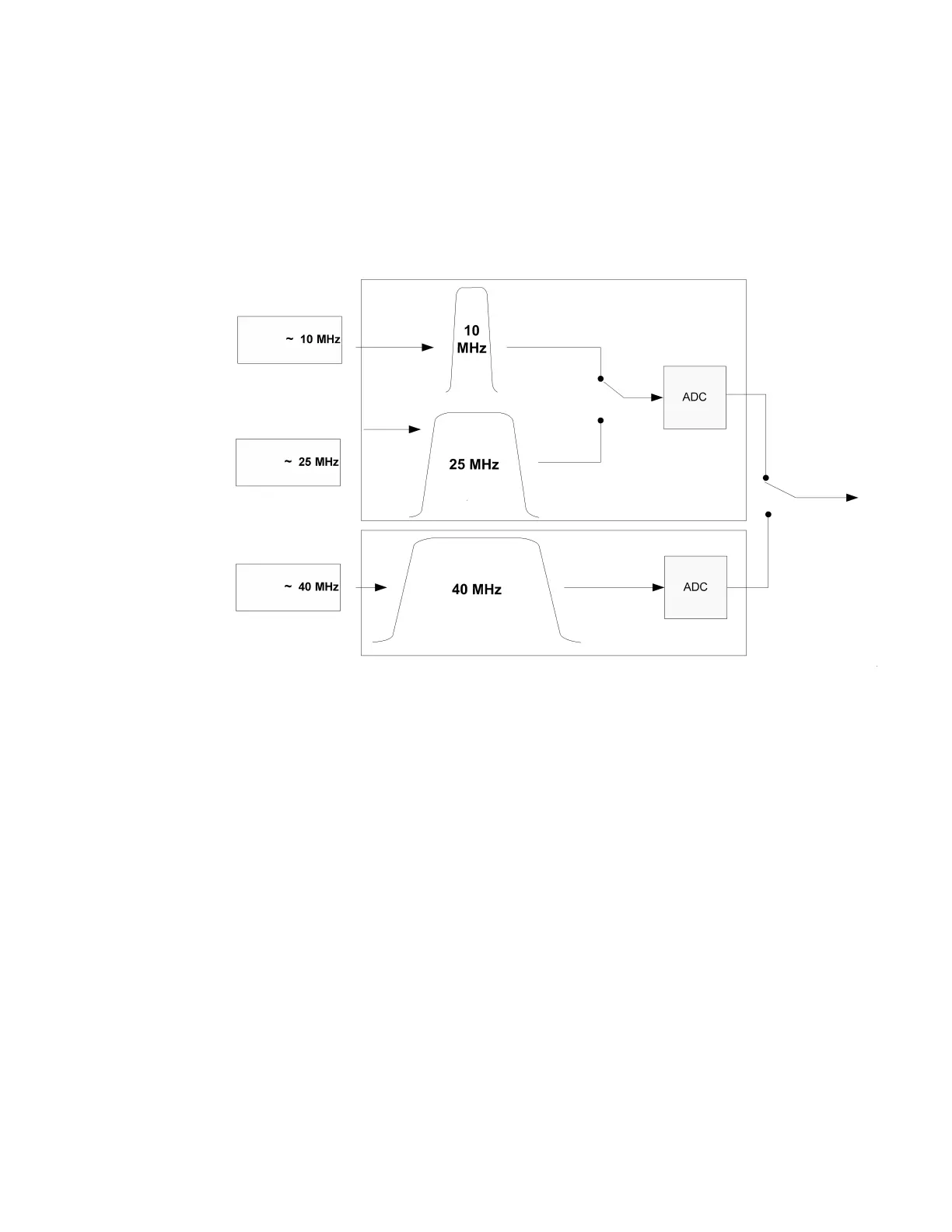3 Spectrum Analyzer Mode
3.2 Swept SA Measurement
Further improvement in dynamic range is possible by changing the FFT IF Gain (in
the Meas Setup menu of many measurements). If the segments are reduced in
width, FFT IF Gain can be set to High, improving dynamic range.
Depending on what IF Bandwidth option you have specified, there can be up to
three different IF paths available in FFT sweeps, as seen in the diagram below:
The 10 MHz path is always used for Swept sweeps. It is always used for FFT sweeps
as well, unless you specify ~25 MHz in which case the 25 MHz path is used for FFT
sweeps, or ~40 MHz, in which case the 40 MHz path is used for FFT sweeps. Note
that, although each of these control s picks the specified path, the instrument may
choose an FFT width less than the full IF width to optimize speed, trading off
acquisition time versus processing time.
If the 255 MHz IF (Option B2X) is installed, it may also be used for FFT sweeps, but
only if you specify ~255 MHz for FFT Width.
Points
Sets the number of points taken per sweep, and displayed in the traces. The current
value of points is displayed parenthetically, next to the sweep time in the lower-right
corner of the display. Using more points provides greater resolution. Using fewer
points compacts the data and decreases the time required to access a trace over
the remote interface.
Increasing the number of points does not increase the sweep time. However, it can
slightly impact the trace processing time and therefore the overall measurement
Spectrum Analyzer Mode User's &Programmer's Reference 499

